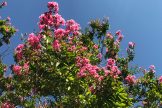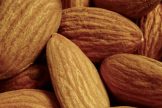
 Important note about plant availability. Important note about plant availability.There are hundreds of factsheets on our website provided for your information. Not all plants will be available at all times throughout the year. To confirm availability please call (03) 8850 3030 and ask for the nursery. |
Several decades ago Silver Birches were the tree of choice in Melbourne. Their glorious trunks and delicate foliage danced across the Melbourne landscape and number plates proclaimed Victoria to be the Garden State. Melbourne was wonderful. I loved it. Then Magnolia ‘Little Gem’ made a huge splash followed by upright ornamental pear trees, and the silver birch was a bit lost in the rush to embrace the new. But it is worthwhile re-visiting exactly why Melbourne had a love affair with Betula pendula in its many forms.
A few useful things to note:
- Botanical name is Betula pendula
- The leaves are small and generally blow away without needing raking, or if you want to rake – a quick and easy job and they compost rapidly.
- They can be a bit messy at times and drop little twigs and catkins.
- They drop their leaves fairly early in autumn, letting in lovely winter sun while providing good summer shade. Excellent for solar protection when planted East, North or West of the house.
- Stunning trunks – smooth papery white bark, which as the trees age to old eventually becomes rough and show dark fissures between the white.
- Tolerant of varied pH.
- Lovely as a single specimen tree, in a line and at their best when planted as a copse of trees
- Rarely needs pruning, but if needed, prune in late summer or early autumn to avoid the bleeding which can occur if winter or spring pruned.
- A pioneer species (first to establish after fire, disturbance etc), and as such is fast growing and not long lived (rarely past 70 years).
Betula pendula (Silver Birch)
10m x 6m
The bronze bark of the sapling turns beautiful powdery paper white as it matures, eventually aging to the character filled fissured white and black trunk of an old tree. Will cope with short dry periods, but better with summer irrigation. Yellow autumn colour.
Betula pendula ‘Dalecarlica’ (Cut leaf Silver Birch or Swedish Birch)
11m x 6m
Leaves are deeply cut and give a fine feathery look (see picture below). One of the first trees to lose its leaves in autumn.
Betula pendula ‘Fastigiata’ (Columnar Silver Birch)
11m x 4m
Excellent for narrow spaces, softening the look of a hard wall close by. Leaves turn a lovely buttery yellow in autumn. When established copes with wet or dry conditions.
Betula pendula ‘Globe’ (Standard Silver Birch)
1.5m x 1m
This is a grafted form of Silver Birch, produced as a standard, commonly a 1.5m silver/white stem with a tight green ball in the top, eventually as much as 1m across in diameter. Green foliage changes to yellow in autumn. Prune in summer and early fall to maintain shape, do not prune in winter or spring. Do not let dry out in summer.
Betula pendula ‘Moss White’ (Moss White Silver Birch)
8-10m x 3-5m
Moss White, as the name suggests, was selected for its bright white bark. A beautiful tree, disappeared temporarily, but has found its way back on to the market. The sapling has a grey bark which gradually changes into the characteristic bright white as the tree matures. A stunning selection. Leaves turn a pale yellow in autumn. Tolerates short dry periods.
Betula pendula ‘Youngii’ (Weeping Silver Birch)
Commonly grafted on a 1.5m stem. Can get 3+m wide as it ages and matures.
A feature tree to be grown on its own or in a pair. A weeping form is grafted onto a straight stem, and the tree will only grow to the height of the graft. Leaves turn yellow in autumn.




